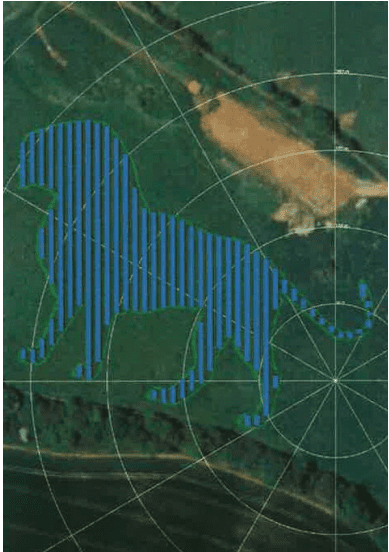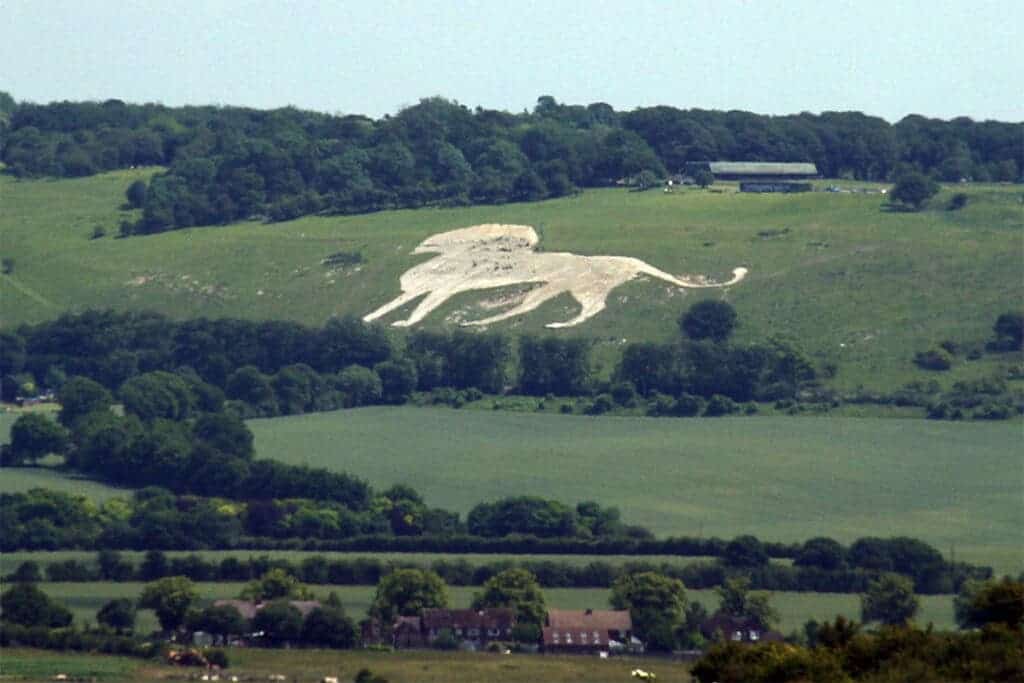Londoners might already be familiar with the giant Whipsnade White Lion, an iconic landmark overlooking Britain’s huge Whipsnade zoo. But this chalk landmark is now getting a modern counterpart that will help the zoo get closer to its sustainability goals.

Lion-powered
The new lion will cover an area of two acres (87.100 sq ft, or 8.090 sq meters) and will be made out of solar panels, estimated to provide one-third of the power requirements of the Zoo — around 1MWs of power (enough to power some 700 houses). Although its sheer size will mean that someone at ground level won’t be able to see the lion’s shape but Whipsnade is confident that it will “create a spectacle to be seen from the skies”.
“We are really excited about our plans for a Solar Lion to join our Whipsnade White Lion on the beautiful Chiltern hills and even more excited about the difference she could make to the planet” said Owen Craft, ZSL Whipsnade Zoo’s Chief Operating Officer, in a press kit. “I hope that our Whipsnade Solar Lion, when she is in place, will be a beacon of light reminding people that change is not only necessary, but possible.”
The Whipsnade White Lion is a chalk figure that has been overlooking the Dunstable Downs escarpment since 1933. Since then, it’s become an iconic sight for the area, attracting tourist attention and not just a little local pride. The lion has been restored in September 2017, with special care being taken to protect both it and the “special scientific interest area” around it.
Now, it’s getting a modern counterpart. Essentially, what the zoo is planning to do is to create a massive solar farm in the shape that harkens back to the iconic chalk lion.

According to the press kit from ZSL Whipsnade Zoo, this ‘solar lion’ is part of the zoo’s commitment to becoming carbon neutral by 2035. Other initiatives that will accompany the lion include reducing their emissions from The ‘solar lion’ is part of ZSL Whipsnade Zoo’s mission to make itself net zero carbon by 2035. Other plans to achieve this include reducing emissions caused by electricity and fossil fuel use for heating by 50% by 2030, and taking steps towards reducing their indirect emissions generated by the zoo’s supply chains.
Other initiatives include halving the zoo’s water consumption, helping to foster local wildlife, and arranging transport schemes with local services to encourage the use of public transport with visitors.
The announcement comes in the wake of the zoo celebrating its 90th birthday (on 23 May 2021). Whipsnade is not simply a zoo, however; part of the Zoological Society of London (ZSL), it has a long heritage of conservation and breeding efforts and has taken an active role in the reintroduction of species that had gone extinct in the wild, including Przewalski’s horse (Equus ferus przewalskii) native to Mongolia and the Scimitar Horned Oryx (Oryx dammah), native to North Africa.
“As a global conservation charity, we know only too well the devasting effect climate change is having on the world’s wildlife, as well as on the survival of our own species. As we approach the United Nations climate change conference COP26 in Glasgow, we’re calling on world leaders to put nature at the heart of global decision making, and we’re committed to that ourselves,” Craft adds. “We must invest our time, energy and resources into reducing our carbon emissions to be as low as they can be, as quickly as we can, with innovations like the Solar Lion.”
The full details on ZSL Whipsnade Zoo’s environmental policy and initiatives can be found here.









